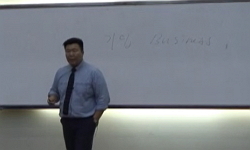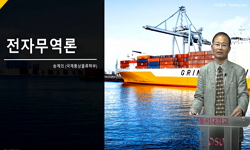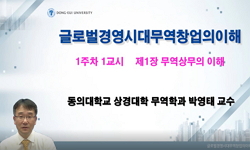The developing countries of today are promoting industrialization in order to achieve an increase in the speed of economic growth. This is because most of the developed countries achieved their success through industrialization. Compared with the econ...
http://chineseinput.net/에서 pinyin(병음)방식으로 중국어를 변환할 수 있습니다.
변환된 중국어를 복사하여 사용하시면 됩니다.
- 中文 을 입력하시려면 zhongwen을 입력하시고 space를누르시면됩니다.
- 北京 을 입력하시려면 beijing을 입력하시고 space를 누르시면 됩니다.
韓國貿易構造와 아시아 NICS과의 水平分業에 관한 硏究 = (A) Study on Horizontal Division of Labour for Korean Trade Structure between Asian NICS
한글로보기https://www.riss.kr/link?id=T1652455
- 저자
-
발행사항
부산 : 釜山産業大學校 貿易大學院, 1987
-
학위논문사항
학위논문(석사) -- 부산산업대학교 무역대학원 , 무역학과 , 1987. 8
-
발행연도
1987
-
작성언어
한국어
-
주제어
무역 ; 무역구조 ; 아시아 ; NICS ; 수평분업 ; Trade Structure ; Asian NICS
-
KDC
326.20911 판사항(4)
-
DDC
382.0951905 판사항(21)
-
발행국(도시)
부산
-
형태사항
100p. : 삽도 ; 26cm.
-
일반주기명
부산산업대학교는 경성대학교로 변경됨
참고문헌: p. 92-98 - 소장기관
-
0
상세조회 -
0
다운로드
부가정보
다국어 초록 (Multilingual Abstract)
The developing countries of today are promoting industrialization in order to achieve an increase in the speed of economic growth. This is because most of the developed countries achieved their success through industrialization. Compared with the economic history of the developed countries, it seems that the later the underdeveloped countries begin their economic growth, the faster the rate of economic growth they achieve through industrialization. The economic growth of Korea for example has reduced remarkably the time required historically by the developed countries for their economic growth. Gerschenkron's historical dynamic view holds that the reason underdeveloped countries speed of industrialization is faster than that of the developed countries is that the former emphasize the chemical heavy industry. Even though the process of development in today's developing countries is similar to that of the developed countries, there are some important differences. The opportunities for development today are enhanced by changes in the international econmic environment. Still not all of the devoloping countries have succeeded in achieving a desirable rate of economic growth through industrialization.
There has been very little analysis from the dynamic point of view of specific instances of success of failure in industrialization. This dissertation follows the method of comparing the progress of the structural pattern of international competitive power by analyzing the international industrial interdependence and the system of reciprocal trade.
This dissertation concludes by suggesting that some developing conturies have been successful in working out their industrialization and others have been less succesful. 0ther nation never throw off their colonial heritage, and so do not benefit from their backwardness, and never escape from the swamp of stagnation.
Despite the fact that Korea faces tightening forms of protectionism in trade and the supply of natural resources from the advanced countries, Korea could still continue her growth through the government's economic plans launched between 1962 to 1984, Korea showed an annual average growth rate of 8.2percent. Korea now stands in the group of newly industrialized countries. Korea's economy will be developed even more if the plan to expand the political and econmic ties among the Pacific basin nations materializes. However, trade competition will become keener between the newly industrialized nations, because these nations have all grown through similar economic measures.
Korea's rapid growth is attributable to the development of its export structure. However, the export of light goods remarkably decreased in 1980, while the export of heavy and chemical commodities increased during that same year. The growth rate of manufacturing firms shows that the manufacturers of heavy goods grew faster than manufacturers of light goods during the period from 1970 to 1980. In contrast, the import ratio of manufacturers decreased from 19.7percent in 1970 to 16.5percent in 1980. These changes result mainly from a change in government economic policies ; government in the past stressed simply the exported commodity itself.
Korea depended heavily upon labor-intensive economic systems until 1970. This economic structure contributed to the export of light goods, such as, clothes, shoes, electronic goods, machinery, and ship building. Cheap labor helped the sales of Korean-made goods, which were inexpensive on the international market. However, because many new developing countries, such as China, and other countries, also enjoy the advantage of cheap labor, the Korean economy these days is threatened more than ever. In the Korean economy "the expansion of exports once meant the expansion of imports" The ratio of imports to the GNP reached thirty to fifty percent. It is expect that from 1982 to 1990 the heavy equip-merit and machinery industry, the production of transportation machinery, electronic goods, electric appliances, and will grow two times as fast as any of those industries today. In fact, these industries so far have contributed the greatest proportion of exports and imports to the Korean economy.
Whether we succeed or fail in the international technological competition determines the future of our country. We will have to make every effort to secure a solid base of industrial technology in order to enter the group of advanced countries by the year 2,000.
목차 (Table of Contents)
- 目次
- Ⅰ. 序論 = 5
- 1. 硏究의 目的 = 5
- 2. 硏究의 方法과 範圍 = 8
- Ⅱ. 韓國 및 아시아 NICS의 貿易構造變化推移 = 10
- 目次
- Ⅰ. 序論 = 5
- 1. 硏究의 目的 = 5
- 2. 硏究의 方法과 範圍 = 8
- Ⅱ. 韓國 및 아시아 NICS의 貿易構造變化推移 = 10
- 1. 우리나라 貿易構造의 變化推移 = 10
- 2. 韓國 및 아시아NIC_(S)의 經濟成長 要因分析 = 20
- 3. 經濟成長의 要因分析 = 22
- 1) 國際産業聯關分析 = 22
- 2) 國際相互聯關構造 = 27
- 3) 聯關分析과 開發戰略 = 28
- Ⅲ. 世界貿易構造와 韓國 및 아시아NIC_(S) 의 水平分業 = 44
- 1. 世界貿易上에 있어서의 韓國貿易의 位置 = 44
- 2. 新興工業國의 比較饅位構造變化 = 46
- 3. 新興工業國 水平分業 結合度 分析 = 58
- Ⅳ. 水平分業關係의 限界性과 刻應方案 = 70
- 1. NICS間 水平分業의 限界性 = 70
- 2. 水平分業에 따른 國際競爭力 提高方案 = 78
- Ⅴ. 結論 = 86
- 參考文獻 = 92
- Abstract = 99












